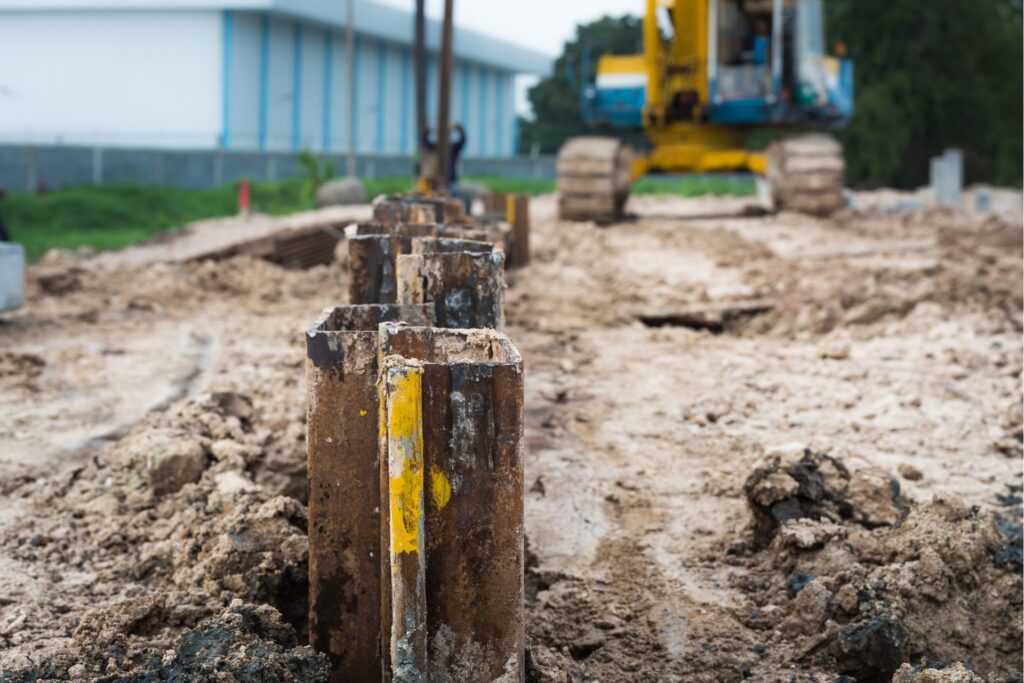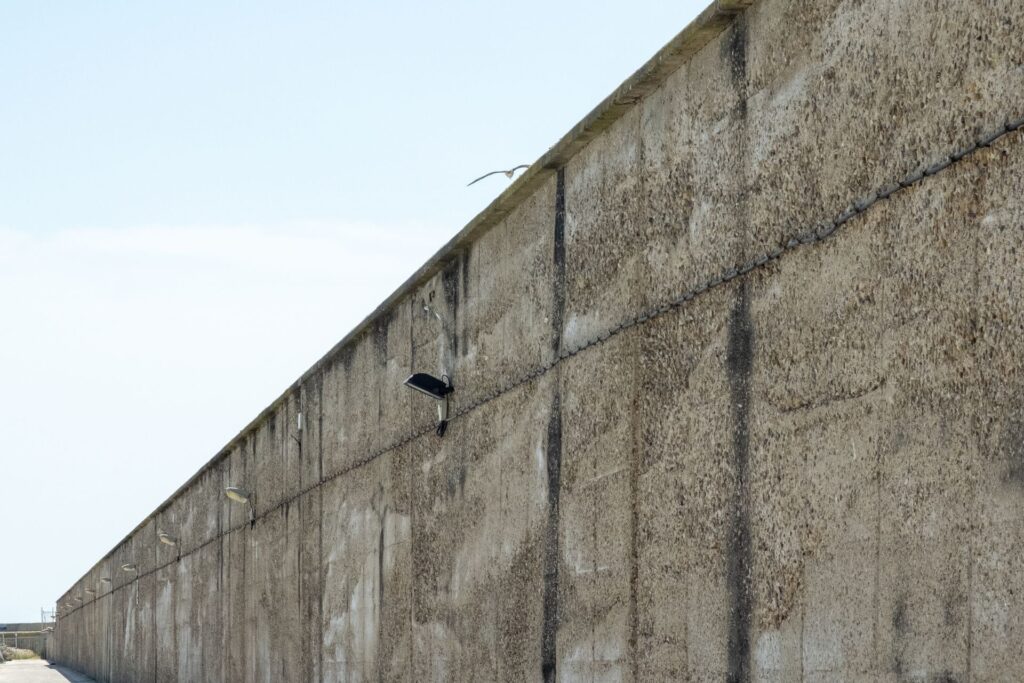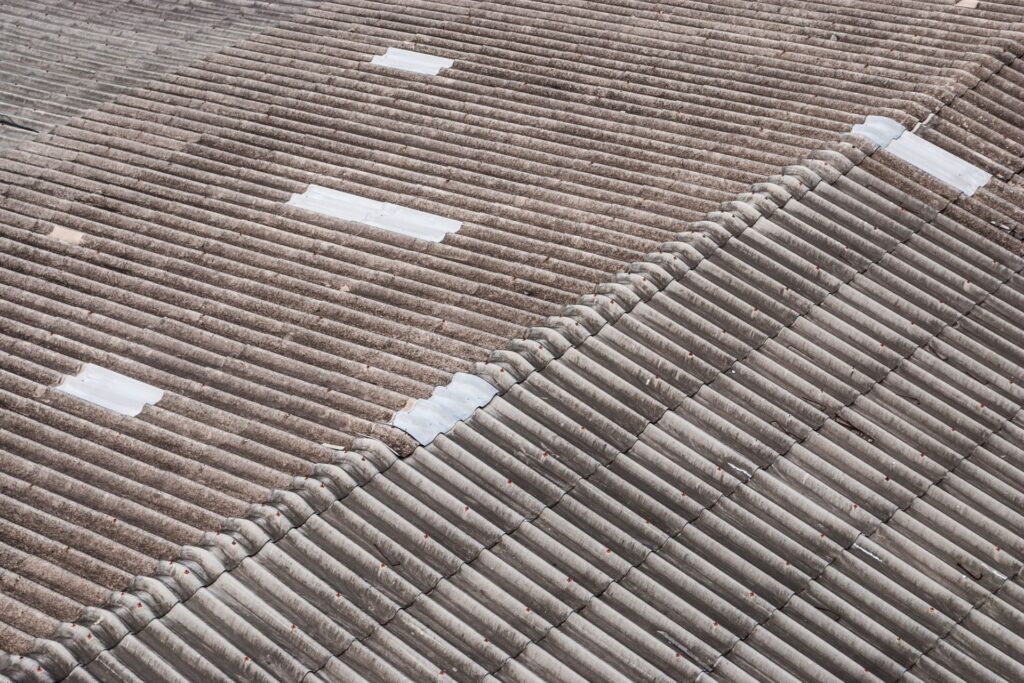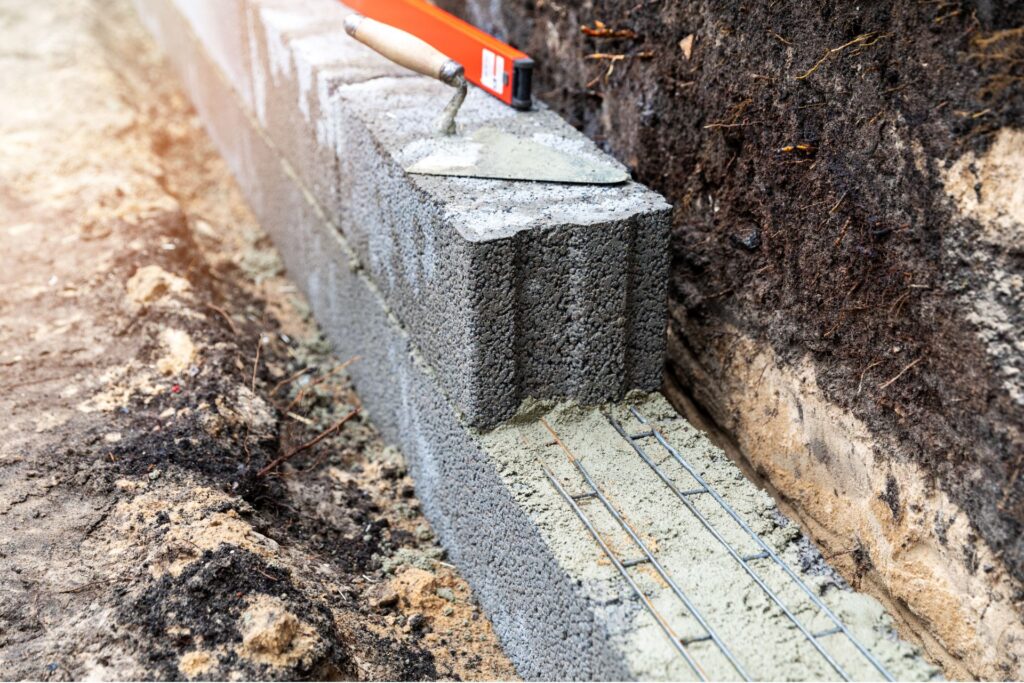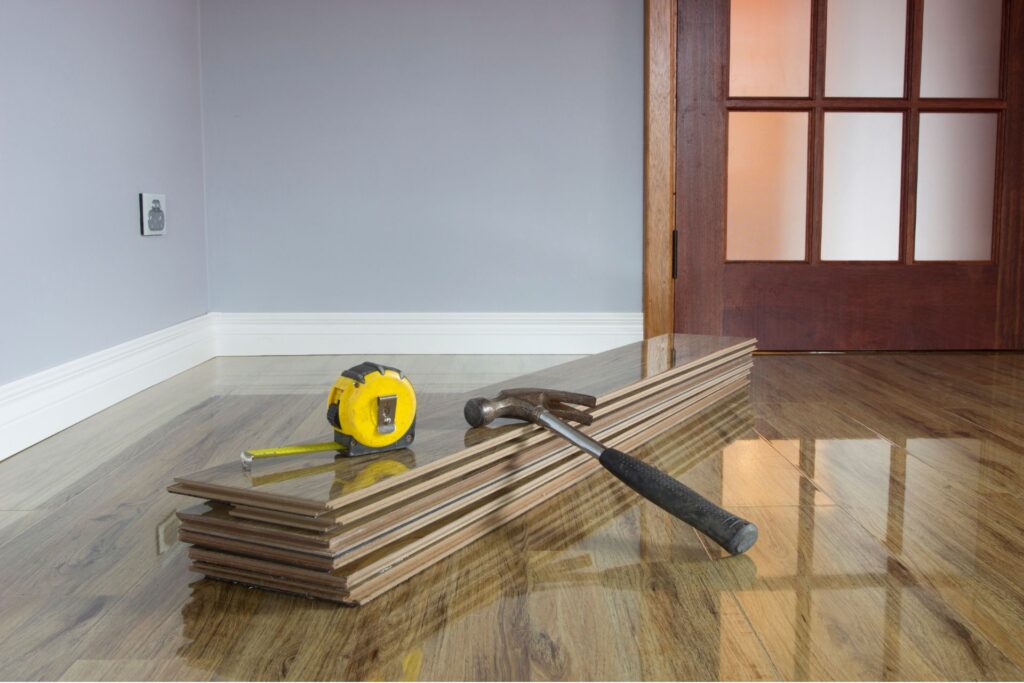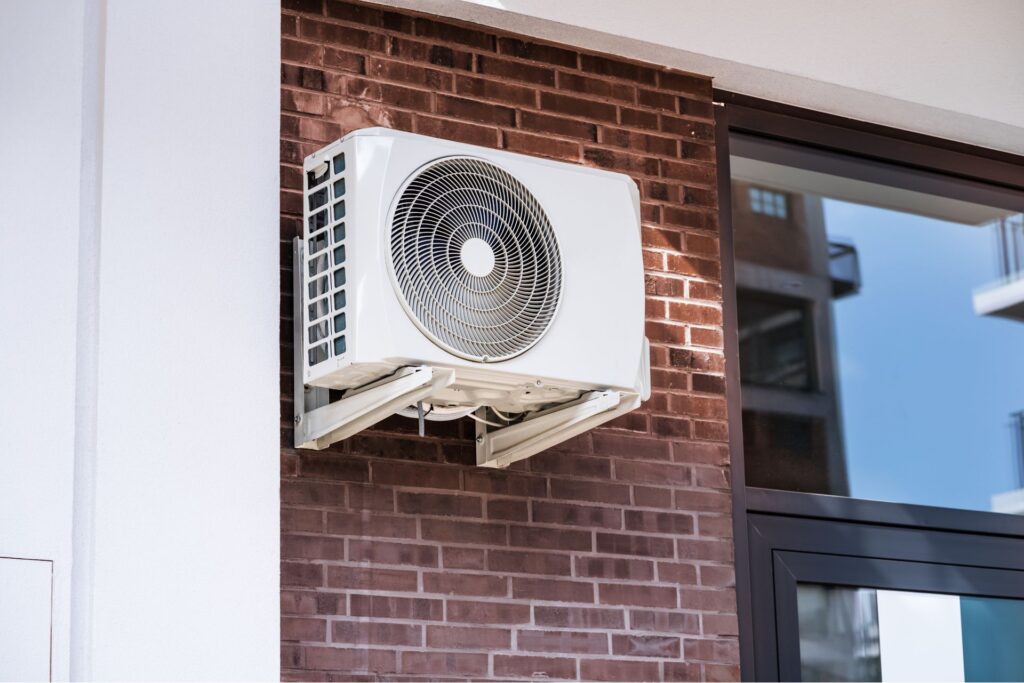Welcome to our comprehensive guide on Retaining Wall Regulations in New Zealand, where we’ll walk you through everything you need to know before starting your next project. Whether you’re looking to beautify your outdoor space or protect your property from erosion, retaining walls are essential structures in many Kiwi homes. But before you grab a shovel or call a contractor, it’s crucial to understand the regulations surrounding their construction. Building a wall without meeting local council requirements can lead to costly mistakes, safety hazards, and even legal penalties. In this post, we’ll break down when you need consent, the height limits, and the specific design considerations that keep your retaining wall compliant, sturdy, and built to last in New Zealand’s unique landscape.
In New Zealand, retaining walls under 1.5 meters generally do not require building consent, unless they support a structure or driveway. However, for walls over 1.5 meters, or in special circumstances like sloped terrain, you will need to apply for consent from your local council. Key factors include proper drainage, structural integrity, and compliance with local environmental guidelines. Always check with your regional council for specific retaining wall regulations to ensure safety and compliance.
- What Is A Retaining Wall?
- Why Retaining Wall Regulations Matter In NZ
- Overview Of Retaining Wall Regulations In New Zealand
- When Do You Need Consent For A Retaining Wall?
- The Building Consent Process
- Key Retaining Wall Design Considerations
- Working With Contractors vs. DIY
- Common Mistakes To Avoid When Building A Retaining Wall
- Council Inspections And Post-Build Requirements
- FAQs: About Retaining Wall Regulations NZ
- Conclusion
- Find A Professional Retaining Walls Company Near You!
What Is A Retaining Wall?
Definition and Purpose
A retaining wall is a specially designed structure built to hold or support soil at different levels on both sides, preventing it from eroding or collapsing. These walls are essential for landscapes where there are significant changes in elevation, such as on slopes or hilly terrain. Retaining walls allow homeowners and businesses to make the most of uneven land by creating level areas for gardens, driveways, or outdoor spaces. In addition to their practical function, retaining walls can also enhance the visual appeal of a property, offering a more polished and structured look to landscapes.
Retaining walls are common in both residential and commercial settings in New Zealand. They are often used to prevent landslides, control water runoff, or create terraced sections for plants. Without retaining walls, steep slopes could lead to soil erosion, flooding, or property damage. By stabilizing the ground, retaining walls make properties safer and more functional, especially in areas prone to heavy rainfall or seismic activity.
Common Types of Retaining Walls
In New Zealand, a variety of retaining walls are available to suit different terrain conditions and aesthetic preferences. Here’s a look at the most commonly used types:
Timber Retaining Walls
Timber retaining walls are a popular choice due to their affordability and ease of installation. Made from treated wood, these walls are ideal for residential gardens or areas with lower soil pressure. While they offer a more natural look, timber retaining walls may require maintenance over time to protect against weathering, particularly in New Zealand’s wet climates. These walls are best suited for smaller projects or areas where a more rustic, natural appearance is desired.
Concrete Retaining Walls
Concrete retaining walls are known for their strength and durability, making them a great option for larger or more complex projects. They can withstand significant pressure from soil and water, which makes them ideal for both residential and commercial applications. Concrete walls can be built in various styles, including poured concrete, concrete blocks, or precast panels. One of the benefits of concrete retaining walls is their longevity and low maintenance. They are particularly useful in areas with heavy rain or where structural integrity is critical.
Gabion Retaining Walls
Gabion walls are constructed by filling wire mesh baskets with stones or other materials. This type of retaining wall offers a unique, industrial aesthetic while also being highly functional. Gabion walls are excellent at absorbing and dispersing water, making them ideal for areas with drainage concerns or where erosion control is a priority. In New Zealand, gabion walls are often used along riverbanks or in areas prone to heavy rainfall. They are also an environmentally friendly option since they utilize natural materials and promote water infiltration rather than creating runoff.
Each type of retaining wall serves a specific purpose and is best suited for different environmental and structural needs. Whether you’re looking to enhance the landscape of your home or prevent soil erosion on commercial property, selecting the right type of retaining wall is key to ensuring both functionality and longevity.

Why Retaining Wall Regulations Matter In NZ
When it comes to construction projects in New Zealand, understanding retaining wall regulations is essential. These rules are in place for good reasons, and ignoring them can lead to serious consequences. Below are key reasons why retaining wall regulations matter in New Zealand:
Safety Concerns
The primary concern when building a retaining wall is safety. If a retaining wall isn’t constructed properly, it can pose a significant hazard to both people and property. The risks include wall collapses, which could lead to injury, property damage, or worse. Whether the retaining wall is small or large, any mistake in its design or construction can compromise its structural integrity. Over time, pressure from the soil or water buildup behind the wall can increase the likelihood of a collapse. Strict regulations ensure that the wall is built to withstand such pressures and reduce the risk of accidents, making sure both workers and residents are protected from potential disasters.
Environmental Factors
New Zealand’s unique environment plays a huge role in why retaining wall regulations are so strict. The country is known for its unpredictable weather conditions, including heavy rainfall, which can lead to soil erosion and increased pressure behind retaining walls. Furthermore, New Zealand is located in a seismically active region, meaning that earthquakes are a regular concern. Retaining walls need to be designed to endure both the wet climate and the potential for ground movement caused by seismic activity. These environmental factors make it even more critical to adhere to regulations that ensure retaining walls are built with the durability and stability required to withstand these natural challenges. Properly designed walls can effectively prevent landslides, erosion, and other environmentally driven issues.
Legal and Financial Implications
Not complying with New Zealand’s retaining wall regulations can result in more than just structural problems—it can lead to serious legal and financial consequences. If a retaining wall is built without following the proper codes, homeowners and builders could face penalties such as fines or stop-work orders. In the worst-case scenario, you could be required to tear down the wall and start over, leading to significant financial losses. Even if the wall holds up initially, future issues like property damage due to a collapse or injuries caused by a faulty wall can lead to lawsuits or insurance complications. Additionally, when it comes time to sell a property, non-compliance with building codes can cause delays or even prevent the sale from going through until issues are resolved. By ensuring compliance from the start, property owners and builders can avoid these costly setbacks and ensure their investment is safe.
In conclusion, retaining wall regulations in New Zealand are designed to protect people, properties, and the environment. Safety concerns, environmental factors, and legal consequences all highlight the importance of adhering to these rules. When you build a retaining wall the right way, you’re not just following the law—you’re safeguarding your future.

Overview Of Retaining Wall Regulations In New Zealand
When planning to build a retaining wall in New Zealand, understanding the regulatory requirements is crucial. Retaining walls serve important structural functions, especially on sloped properties, and must adhere to local and national building standards to ensure safety and stability. In this guide, we will explore the essential regulations surrounding retaining walls, with a focus on the New Zealand Building Code (NZBC) and variations across regional councils.
Building Code Requirements (NZBC)
The New Zealand Building Code (NZBC) establishes the fundamental guidelines for constructing retaining walls, particularly in terms of structural integrity, drainage, and height. Meeting these standards is essential for preventing structural failures and mitigating potential hazards, such as landslides or water damage. Let’s dive into the critical areas that the NZBC covers:
Key Focus Areas
Height Limits
One of the primary considerations in retaining wall construction is height. According to the NZBC, retaining walls under 1.5 meters in height may not require a building consent, provided they are not supporting a load such as a building or driveway. This exemption simplifies the process for smaller projects, making it easier for homeowners to make improvements on their property.
However, retaining walls over 1.5 meters in height generally do require a building consent. This is due to the increased risk of failure with taller walls, which must withstand greater soil pressure and environmental factors like erosion. As a result, walls exceeding this height limit are subject to more stringent design and construction requirements.
Structural Integrity
Retaining walls must be built to withstand the weight and pressure of the earth they are holding back. Structural stability is essential, particularly in areas prone to earthquakes, flooding, or landslides. The NZBC outlines specific requirements for materials, foundation strength, and the design of the wall to ensure that it can endure these forces over time.
Drainage and Water Flow Management
Proper drainage is another key factor that the NZBC emphasizes. Water buildup behind a retaining wall can lead to catastrophic failures due to the added pressure on the structure. To avoid this, retaining walls must include adequate drainage systems, such as weep holes or perforated pipes, to allow water to escape and prevent the buildup of hydrostatic pressure. The Building Code mandates that drainage be part of the overall design to protect both the wall and the surrounding property from water damage.
Regional Council Differences
While the New Zealand Building Code provides a solid foundation for retaining wall regulations, it’s important to note that local councils may have additional or more specific rules depending on regional risks and conditions. For instance, areas prone to heavy rainfall, landslides, or seismic activity might require more robust designs or stricter building consent processes.
Each regional council can impose their own restrictions or requirements beyond what is outlined in the national code. For example:
- A local council may require a building consent for walls under 1.5 meters if they are in a high-risk area for landslides or flooding.
- In some regions, geotechnical assessments may be necessary before construction begins, especially if the property is located on a steep slope or within a coastal erosion zone.
It is essential to consult your local council before starting any retaining wall project to ensure compliance with all applicable rules and to avoid penalties or costly retrofits later.
Understanding retaining wall regulations in New Zealand is critical for ensuring that your project is safe, legal, and long-lasting. By following the guidelines set forth in the New Zealand Building Code and checking with your regional council for additional requirements, you can avoid potential pitfalls and ensure your retaining wall is built to withstand the test of time. Whether you’re constructing a small garden wall or a large retaining structure, prioritizing structural integrity, proper drainage, and local compliance will safeguard both your property and your investment.

When Do You Need Consent For A Retaining Wall?
Building a retaining wall may seem like a straightforward project, but depending on the height, location, and the structure it supports, you might need to obtain consent. Failing to meet the regulatory requirements can lead to issues down the road, both structurally and legally. Let’s break down when consent is necessary for a retaining wall and why these regulations are essential.
Height Thresholds for Consent
One of the most critical factors in determining whether you need building consent for a retaining wall is its height. In most cases, walls that exceed 1.5 meters (about 5 feet) in height will require official consent from your local authority. This is because taller walls face greater pressure from the soil they hold back, making safety a top priority.
However, it’s not just about height. If the retaining wall is designed to support additional structures, like a building or driveway, you’ll need consent even if the wall is shorter than 1.5 meters. The added weight these features impose on the wall can increase the risks of failure, so building consent ensures that all structural and safety aspects are properly addressed.
Geotechnical Considerations
For more complex or taller retaining walls, it’s often necessary to involve professionals, such as a geotechnical engineer or structural engineer. Geotechnical reports are required when the wall is built on tricky terrain, such as on a slope, or if the soil conditions are uncertain. These professionals will assess the stability of the soil, potential drainage issues, and other factors that could impact the wall’s long-term integrity.
By involving an engineer, you ensure that your retaining wall is designed to withstand the forces of nature and time. These reports are particularly vital for walls above 1.5 meters, as they provide a detailed analysis of how the wall interacts with the land around it, ensuring it meets safety standards.
Exceptions and Special Circumstances
While the general rule states that walls under 1.5 meters may not need consent, there are several exceptions. For example, if you’re building a retaining wall on a sloped property, the risks increase due to the potential for soil movement, landslides, or erosion. In such cases, consent might still be required even if the wall is relatively short.
Similarly, if the wall is located near a boundary, particularly if it affects neighboring properties, local authorities may require consent to ensure that it doesn’t cause disputes or damage. It’s also essential to consider any local bylaws or regulations that may impose stricter requirements, so it’s always a good idea to check with your local council before starting construction.
In conclusion, retaining wall regulations are in place to protect both your property and the surrounding environment. Consent is often required for walls taller than 1.5 meters, walls supporting structures, and in situations where the land presents unique challenges. When in doubt, consulting with an engineer or your local authority can save you from future headaches. Always prioritize safety and compliance to ensure your retaining wall stands strong for years to come.

The Building Consent Process
The building consent process is a critical step in any construction project, ensuring that your plans align with local regulations and safety standards. Understanding this process is essential to avoid delays, additional costs, and legal complications down the road. Below is a step-by-step guide that will help you navigate the building consent process, along with insights into the timeline and costs involved.
Step-by-Step Process
Preparing Plans and Drawings
The first step in obtaining building consent is creating detailed plans and drawings of your project. These plans need to clearly illustrate the scope of the work, including dimensions, materials, and any structural elements. The drawings should comply with local building codes, and it’s important to ensure they are accurate and comprehensive. Incomplete or vague plans can cause delays during the approval process.
Engaging an Engineer or Architect (if necessary)
Depending on the complexity of your project, you may need to engage a licensed engineer or architect. For larger or more technical projects, such as those involving structural changes or new builds, having a professional ensure your design is safe and compliant is critical. They can also help address any issues the council might raise later in the process, saving you time and money.
Submitting the Application to the Local Council
Once your plans are ready, the next step is to submit your building consent application to the local council. This typically includes filling out a detailed application form, attaching your plans, and paying an application fee. Some councils offer online submission, while others may require a physical copy. Make sure you follow their specific guidelines to avoid delays in processing.
Council Inspection and Approval
After receiving your application, the council will conduct a thorough inspection of your plans. They will review everything from the structural integrity to compliance with local zoning laws and environmental regulations. If the plans meet all the required standards, the council will issue a building consent. In some cases, they might request further information or modifications, which can add time to the process.
How Long Does it Take
The timeline for obtaining building consent can vary widely based on several factors, including the complexity of your project and the local council’s workload. Generally, the process takes between 20 and 30 working days from the time you submit your application. However, larger or more complex projects may take longer if the council requests additional information or if your plans need to be revised.
Factors that may influence the timeline include
- Project complexity: The more intricate your design, the more time it will take for the council to assess.
- Council backlog: Local councils often deal with a large number of applications, and during peak building seasons, the process may slow down.
- Revisions needed: If your initial submission is incomplete or does not meet regulatory requirements, the council may ask for revisions, which will extend the approval time.
Costs Involved
The costs of obtaining building consent can vary depending on the type of project and location. Below is a general breakdown of the expenses you may incur during this process:
Application Fees
The application fee is charged by the local council and usually depends on the size and complexity of your project. This can range from a few hundred to several thousand dollars. Some councils may also charge additional fees for site inspections or environmental assessments.
Professional Fees
If your project requires the expertise of an architect or engineer, you will need to factor in their costs. Architect fees can range from 5% to 15% of the total project cost, while engineers may charge an hourly rate or a flat fee depending on the scope of work. For more complex projects, these fees can add up quickly.
Unexpected Costs
During the consent process, you might encounter unexpected costs, such as revising plans or additional inspections. It’s wise to budget for these potential expenses. Also, if the council finds issues during the inspection, you may need to make changes to your project, which can further increase costs.
Final Thoughts
Navigating the building consent process can be a daunting task, but with proper planning and understanding of the steps involved, it doesn’t have to be. Preparing detailed plans, engaging professionals when necessary, and being aware of the costs and timeline can make the process much smoother. Remember that communication with your local council and professionals can help avoid unexpected delays and expenses, keeping your project on track.
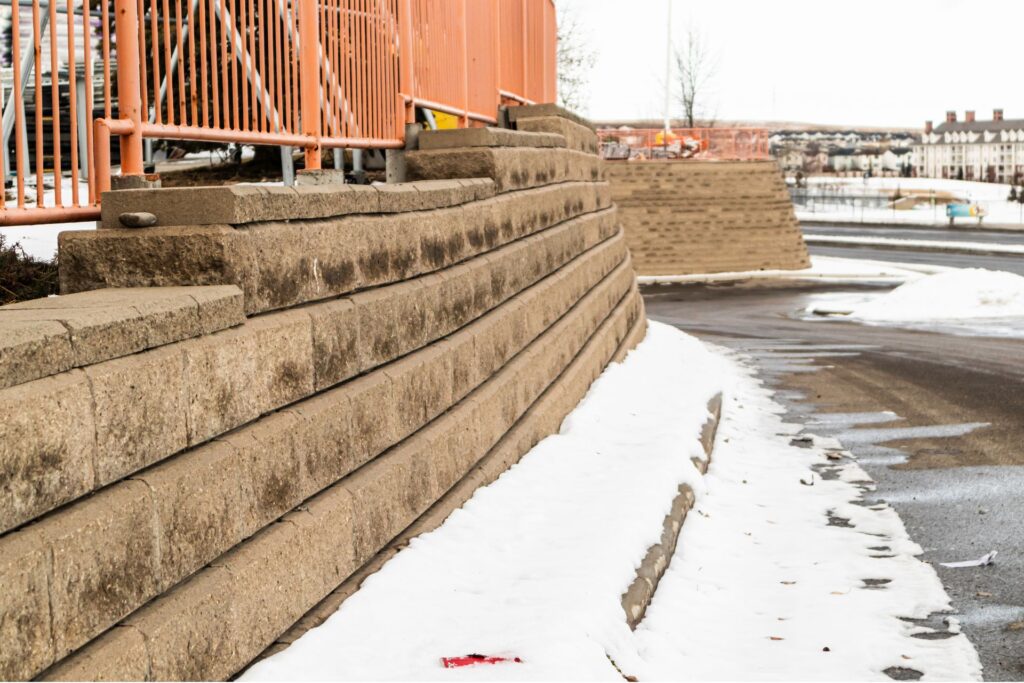
Key Retaining Wall Design Considerations
When planning and constructing a retaining wall, there are several crucial factors to take into account to ensure it is both structurally sound and aesthetically pleasing. Below are the primary considerations that homeowners and builders should focus on to meet safety, functionality, and design goals:
Material Choices
Selecting the right material for your retaining wall is a fundamental step in the design process. Each material has its own advantages and limitations, impacting not only the structural integrity but also regulatory compliance.
- Timber: A popular choice for smaller retaining walls, timber is cost-effective and easy to work with. However, it may not be the best option for long-term durability, especially in areas with high moisture or termite activity. Timber walls generally require regular maintenance to avoid rot and degradation.
- Stone: Stone offers a natural and timeless look, making it an aesthetically pleasing choice. It is highly durable and weather-resistant, but the construction process can be more labor-intensive and costly. Stone walls are typically very strong but may require careful planning to ensure stability, particularly in seismic zones.
- Concrete: One of the most robust materials available, concrete is ideal for taller or larger retaining walls. It can be poured in place or made using precast blocks. Concrete provides exceptional strength and durability, with lower maintenance needs compared to timber or stone. However, it can be more expensive initially, and additional aesthetic treatment may be required if you prefer a more natural look.
- Regulatory Approval: When choosing materials, it’s essential to consider local building codes and regulations. Some materials, like timber, may have restrictions based on environmental factors or durability concerns in certain regions. Stone and concrete, on the other hand, often have fewer hurdles in terms of approvals but still require proper engineering to ensure compliance with safety standards.
Drainage Requirements
Drainage is one of the most critical aspects of retaining wall design, as poor drainage can lead to wall failure. Water that accumulates behind the wall increases the pressure on the structure, which could cause it to crack or collapse over time.
To mitigate this risk, retaining walls should include proper drainage systems such as:
- Weep holes: These are small openings in the wall that allow water to escape from behind the structure, relieving pressure buildup.
- Gravel Backfill: Placing gravel behind the wall helps water drain downwards, preventing pooling and reducing the risk of erosion.
- Drainage Pipes: In some cases, installing perforated drainage pipes behind the wall can further enhance water management by guiding excess water away from the structure.
Incorporating effective drainage solutions ensures that your retaining wall will not only meet building code requirements but also maintain its structural integrity over time.
Earthquake Resistance
In earthquake-prone regions like New Zealand, designing a retaining wall with seismic safety in mind is paramount. Earthquakes exert lateral forces on retaining walls, which can cause significant movement or failure if the wall isn’t properly engineered.
Key earthquake-resistant design strategies include
- Flexible Materials: Use materials that can absorb and dissipate seismic energy without cracking or breaking. Reinforced concrete is often a top choice due to its ability to handle dynamic loads.
- Reinforcement: Adding steel reinforcement or geogrids can enhance the wall’s stability, making it more resilient to the lateral forces generated by an earthquake.
- Proper Foundation: Ensuring a deep and solid foundation helps to anchor the wall and prevent it from tipping or sliding during seismic activity.
Designing for seismic safety is not just about protecting the retaining wall itself but also about safeguarding the property and people around it.
Aesthetic Considerations
While safety and functionality are top priorities, the visual appeal of a retaining wall shouldn’t be overlooked. A well-designed wall can enhance the overall look of your property, adding to its value and curb appeal.
To strike the right balance between safety and aesthetics, consider the following:
- Texture and Color: Depending on the material chosen, you can opt for textures or finishes that blend with your landscape or architectural style. Stone and concrete, for example, can be textured or colored to mimic more natural materials.
- Plant Integration: Incorporating greenery such as climbing plants or landscaped terraces can soften the appearance of a retaining wall, making it a more attractive feature in your garden or yard.
- Terracing: For taller walls, consider designing multiple lower terraces instead of a single, tall structure. This not only improves the visual appeal but can also help reduce the lateral forces acting on the wall.
By carefully selecting materials, incorporating thoughtful drainage, designing for earthquake resistance, and considering aesthetic options, you can create a retaining wall that is both functional and beautiful.

Working With Contractors vs. DIY
When it comes to construction or renovation projects, deciding whether to hire a professional contractor or take the DIY route is an important decision. Both options have their pros and cons, and the choice depends on factors like the project’s complexity, your skill level, budget, and timeline. Let’s break it down.
Hiring a Professional Contractor: When to Leave it to the Experts
For large, complex, or highly technical construction projects, hiring a professional contractor or a qualified engineer is often the best choice. Professionals bring a level of expertise that ensures not only a high-quality result but also adherence to local building codes and safety regulations. Here are a few situations where hiring a contractor is the way to go:
- Complex Structural Work: If the project involves major structural changes, such as building a load-bearing wall or modifying your home’s foundation, it’s vital to hire a professional. These tasks require advanced skills and knowledge of engineering principles.
- Plumbing, Electrical, and Gas Work: For safety reasons, electrical and gas installations should only be handled by licensed contractors. Many jurisdictions require inspections and certifications for such work to ensure compliance with building codes.
- Projects that Require Permits: Large-scale renovations often require permits, and in many cases, these permits are only granted if a licensed contractor oversees the work. Hiring an accredited builder ensures that all legal requirements are met.
When selecting a contractor, make sure they are licensed and accredited. Hiring a licensed builder gives you peace of mind, knowing that they have the qualifications and experience to complete the job safely and to a high standard. Additionally, accredited professionals are typically insured, which offers protection if something goes wrong during the project.
DIY Projects: Tackling Simple Tasks Yourself
For homeowners with a passion for DIY, tackling smaller projects like building a wall under 1.5 meters can be both rewarding and cost-effective. DIY projects allow for greater creative freedom and control over your budget. However, it’s essential to ensure you have the right tools, materials, and skills before starting. Here are a few key points to consider:
- Tools and Materials You’ll Need: For a basic wall-building project, the tools you’ll need include a spirit level, trowel, wheelbarrow, measuring tape, and a bricklaying set. Make sure to choose high-quality materials like durable bricks, mortar mix, and appropriate reinforcement options to ensure the wall’s longevity.
- Safety Considerations: Even if you’re handling a small project, safety should always be a top priority. Wear protective gear such as gloves, safety goggles, and sturdy footwear. Additionally, make sure your work area is clear of hazards, and familiarize yourself with any equipment you’re using to avoid accidents.
Beyond personal safety, DIY projects must also adhere to local building standards. In many areas, there are regulations governing the height of walls, drainage considerations, and material choices. Before starting, consult local building codes or consider seeking advice from a professional to ensure compliance.
The Bottom Line
When deciding between hiring a contractor and taking on a DIY project, assess the scope and complexity of the task at hand. For large or technical jobs, the expertise of a professional contractor is invaluable, ensuring safety, quality, and adherence to regulations. However, for smaller, manageable tasks, DIY projects can be a satisfying and cost-effective alternative—just make sure to prioritize safety and preparation.
No matter which route you choose, understanding the scope of your project and preparing adequately will lead to successful results.
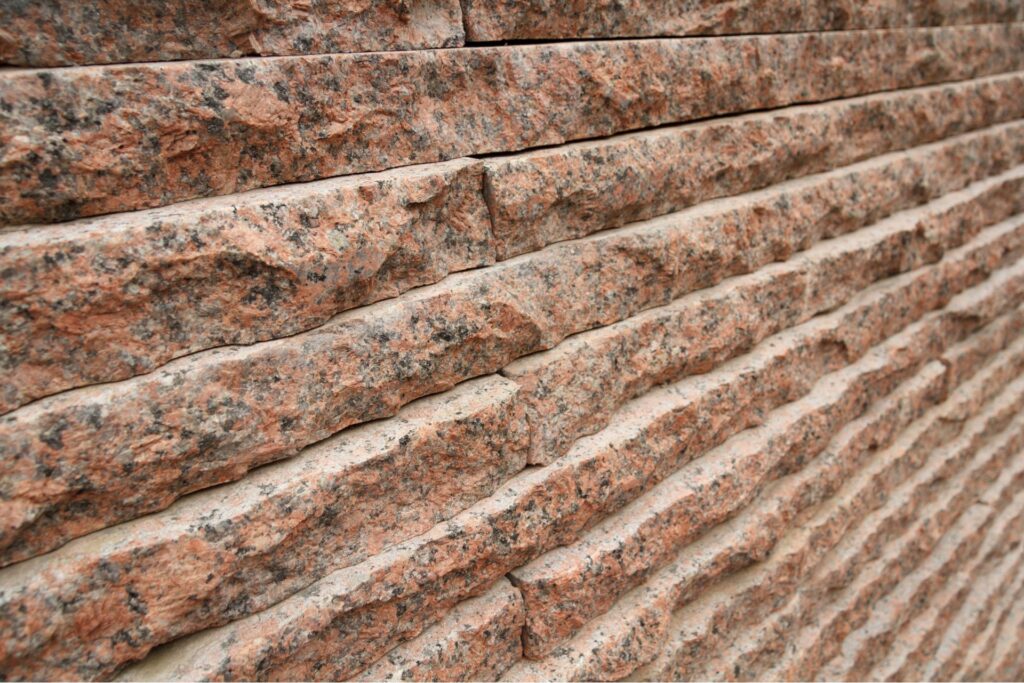
Common Mistakes To Avoid When Building A Retaining Wall
When it comes to constructing a retaining wall, there are several common pitfalls that can lead to serious problems down the line. Whether you’re tackling the project yourself or hiring a contractor, it’s crucial to be aware of these mistakes to ensure your retaining wall is not only functional but also long-lasting. Here’s what to avoid:
Skipping the Consent Process
One of the most significant mistakes homeowners make is neglecting to secure the necessary permits and consents before beginning construction. Depending on the size and location of your retaining wall, local regulations may require you to obtain approval from local authorities. Skipping this step can lead to severe consequences, including hefty fines or being forced to dismantle the structure entirely. Besides the legal implications, following the consent process ensures that your wall is built to code, making it safer and more structurally sound.
Ignoring Drainage
Proper drainage is often overlooked but is a critical element in retaining wall construction. Poor drainage can cause water to build up behind the wall, increasing the pressure on the structure. This additional pressure can lead to a bulging or even collapsing wall, resulting in expensive repairs. Water management systems, such as weep holes or perforated pipes, are essential to prevent water accumulation. Ignoring this aspect not only compromises the structural integrity but can also result in regulatory failures, as many local building codes require proper drainage for retaining walls.
Choosing the Wrong Materials
Selecting the right materials for your retaining wall is key to its longevity and appearance. Different materials—like wood, concrete, or natural stone—come with their own advantages and drawbacks. For instance, while wood may provide a more natural look, it’s prone to rotting and may not be ideal for areas with high moisture levels. Concrete blocks, on the other hand, offer greater durability but might not align with the aesthetic you’re going for. Picking inappropriate materials can affect both the wall’s structural integrity and its visual appeal, leading to premature failure or costly replacements.
Lack of Proper Planning
Building a retaining wall without adequate planning is a recipe for disaster. This includes everything from failing to consider the wall’s height and load-bearing requirements to skipping soil analysis or forgetting to plan for drainage. Without a solid blueprint, you’re more likely to encounter problems like slumping walls or erosion issues. Following all regulatory steps from the outset can save you from expensive fixes in the future, as making adjustments once the wall is already built is often complicated and costly. Proper planning is essential to ensure that your retaining wall functions well and stands the test of time.
By avoiding these common mistakes, you can ensure that your retaining wall is built to last, both structurally and aesthetically.
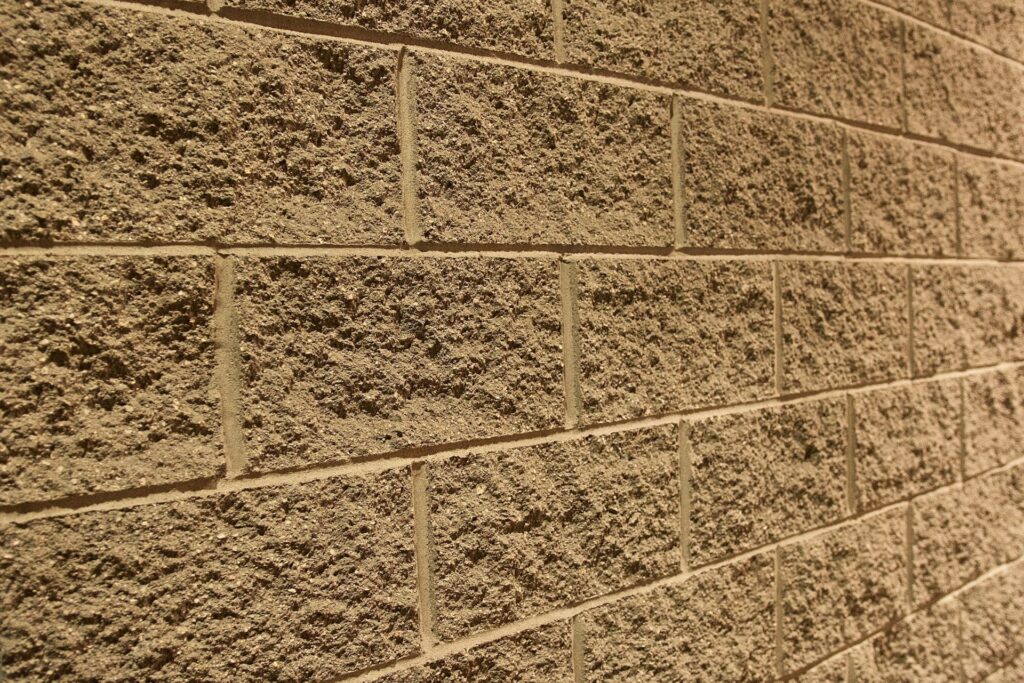
Council Inspections And Post-Build Requirements
When constructing a retaining wall or any similar structure, it’s crucial to understand the council inspections and post-build requirements that must be adhered to. This ensures the project not only meets regulatory standards but also remains safe and compliant for years to come.
When Inspections Occur
Council inspections are a vital part of ensuring that your retaining wall is built to code and maintains structural integrity. These inspections typically occur at various stages throughout the building process to verify that each phase meets the necessary guidelines. Here’s a breakdown of the key points at which council inspections may be required:
- Before Construction Begins: Before breaking ground, the council may need to inspect the plans and the site to ensure that the proposed structure complies with local zoning regulations and doesn’t pose a risk to neighboring properties or the environment.
- During Construction: Inspections may also be carried out at various milestones during the build. For example, when the foundation is laid, or when key structural components are installed, an inspector might check to confirm the work adheres to building codes. This is crucial for identifying potential issues before the project moves too far forward.
- Post-Build (Final Inspection): Once the wall is completed, a final inspection is generally required. This step ensures that the finished structure is safe, stable, and meets all the necessary standards. It’s also a requirement for obtaining final council approval and the Code Compliance Certificate (CCC).
Final Sign-off and Code Compliance Certificate (CCC)
The Code Compliance Certificate (CCC) is perhaps the most critical document to secure after your retaining wall is completed. This certificate, issued by the council, confirms that the construction meets all the legal requirements outlined in the Building Code.
- Why It’s Important: Without this certificate, you could face serious issues down the line, such as difficulties in selling your property, insurance problems, or even legal ramifications if the structure is found to be non-compliant. The CCC acts as proof that the retaining wall was built correctly and safely.
- How to Get It: To obtain the CCC, you’ll need to pass the final inspection, where the council will assess whether the structure was built as per the approved plans. They will also check if the wall is safe, structurally sound, and compliant with all regulations.
Ongoing Maintenance Obligations
Building a retaining wall is not a one-time task—it requires ongoing maintenance to ensure it remains in good condition over time. Proper care is crucial, not just for the longevity of the wall but also to stay compliant with council regulations.
Here are some key tips to help maintain your retaining wall:
- Regular Inspections: Perform routine checks to identify any signs of wear, damage, or structural weakness. Cracks, bulging, or erosion should be addressed promptly to prevent further issues.
- Drainage Maintenance: Retaining walls often require proper drainage to prevent water buildup, which can compromise the structure. Ensure that drainage systems, such as weep holes or drainage pipes, are kept clear of debris.
- Vegetation Management: If there are plants or trees near the wall, monitor their root systems, as over time, they can grow and interfere with the wall’s stability.
- Professional Assessments: Depending on the complexity of the wall, it might be beneficial to have periodic assessments from a structural engineer to ensure long-term safety and stability.
Staying on top of these maintenance tasks not only helps extend the lifespan of your retaining wall but also ensures it remains compliant with local regulations, protecting your investment for the future.
By understanding and following council inspections and post-build requirements, you can ensure your retaining wall is both safe and built to last.
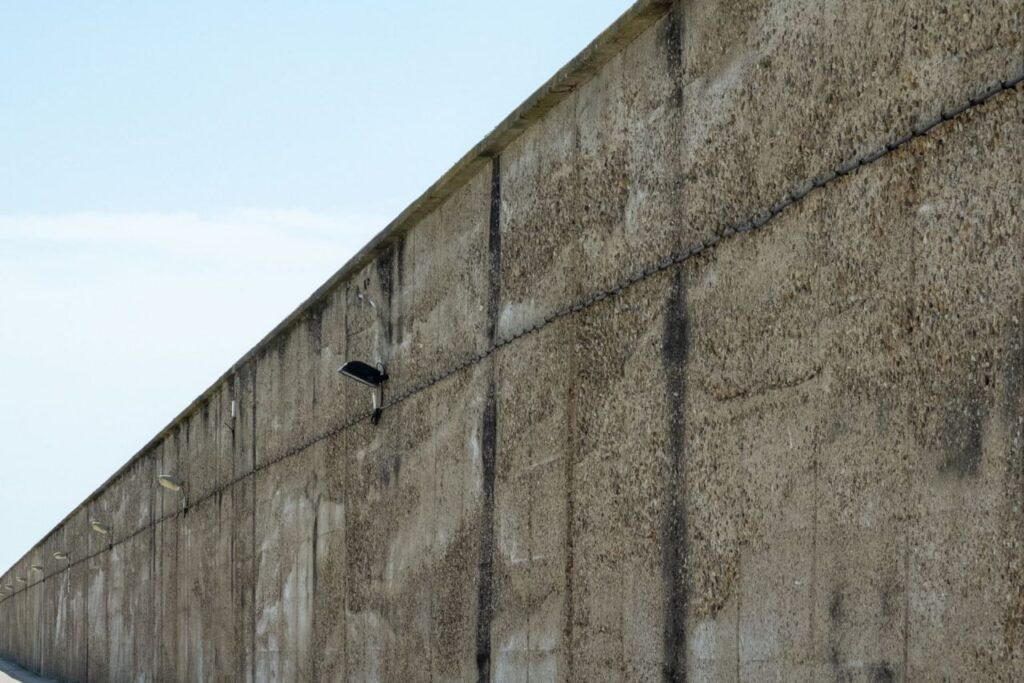
FAQs: About Retaining Wall Regulations NZ
Conclusion
In conclusion, when building a retaining wall in New Zealand, it’s essential to keep in mind the key regulations, such as height limits, proximity to boundaries, and the need for building consents in certain situations. These factors ensure both safety and compliance with local laws. If you’re unsure about any specific requirement, consulting your local council or a professional builder is always the best approach. Whether you’re in the planning stages or ready to begin, don’t hesitate to ask questions or leave comments, and feel free to reach out for more tailored advice to ensure your project runs smoothly and meets all regulations.
Find A Professional Retaining Walls Company Near You!
- Retaining Wall Builders Hastings
- Retaining Wall Builders Hawkes Bay
- Retaining Wall Builders Kapiti
- Retaining Wall Builders Levin
- Retaining Wall Builders Lower Hutt
- Retaining Wall Builders Manawatu
- Retaining Wall Builders Napier
- Retaining Wall Builders Palmerston North
- Retaining Wall Builders Porirua
- Retaining Wall Builders Upper Hutt
- Retaining Wall Builders Wellington
- Retaining Wall Installation Manawatu
- Retaining Walls Nelson
- Retaining Walls Tauranga
- Gabion and Timber Retaining Walls Kapiti
- Retaining Wall Builders Auckland
- Retaining Wall Builders Hamilton
- Retaining Wall Builders Tauranga
- Retaining Walls Christchurch
- Retaining Walls Kerikeri
- Retaining Walls Mangawhai
- Retaining Walls Paihia
- Retaining Walls Rotorua
- Retaining Walls Warkworth
About the Author:
Mike Veail is a recognized digital marketing expert with over 6 years of experience in helping tradespeople and small businesses thrive online. A former quantity surveyor, Mike combines deep industry knowledge with hands-on expertise in SEO and Google Ads. His marketing strategies are tailored to the specific needs of the trades sector, helping businesses increase visibility and generate more leads through proven, ethical methods.
Mike has successfully partnered with numerous companies, establishing a track record of delivering measurable results. His work has been featured across various platforms that showcase his expertise in lead generation and online marketing for the trades sector.
Learn more about Mike's experience and services at https://theleadguy.online or follow him on social media:




